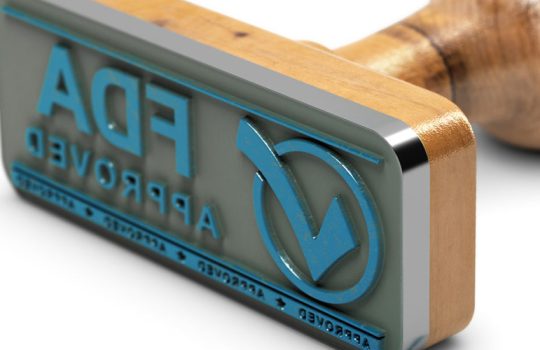Unleashing Innovation: The FDA’s Advanced Manufacturing Technology Designation

Introduction:
In today’s fast-paced technological landscape, the pharmaceutical and medical device sectors stand out as leaders in adopting state-of-the-art innovations. The Food and Drug Administration (FDA) has recognized the crucial role played by Advanced Manufacturing Technologies (AMT) in shaping the future of healthcare. This article delves into the significance of the FDA’s Advanced Manufacturing Technology Designation. We will try to elaborate on how this program fuels innovation in the industry. AMT represents an innovative approach for technology in pharmaceutical manufacturing to enhance reliability, safety, and efficiency. At the same time, it bolsters the demand within the supply chain for both small molecule and biological drugs. The adoption of AMT holds promises for improving patient outcomes. This can happen through its positive impact on manufacturing and the supply chain.
Background
Section 21 USC 356L was introduced in the Food and Drug Omnibus Reform Act of 2022 (FDORA). It was further amended on December 29,2022, in the FD&C Act section 506L Chapter V Drug and Devices.
The assessment of requests for AMT designation involves a thorough review by a team of FDA experts specializing in quality assessment. Their evaluation focuses on scrutinizing the data and information provided. This evaluation can determine whether the manufacturing method or combination of methods aligns with the criteria outlined in section 506L of the Food, Drug, and Cosmetic (FD&C) Act.
Upon the successful granting of AMT designation, subsequent applicants for new drug applications (NDA), abbreviated new drug applications (ANDA), or biologics license applications (BLA) are permitted to utilize or refer to the designated AMT. It is essential for these applicants to explicitly specify the application of the designated AMT about their product development. This information should be included in the submissions detailing the development and manufacturing processes for NDA, ANDA, or BLA.
Designation Request:
According to this section, the Secretary must institute a procedure for designating methods of manufacturing drugs. This procedure should encompass biological products and their active pharmaceutical ingredients, as advanced manufacturing technologies. A manufacturing method or combination qualifies for advanced manufacturing technology designation if it incorporates a novel technology or employs an established technique or technology innovatively. This innovation must significantly enhance drug manufacturing while ensuring equivalent or superior drug quality.
This improvement may manifest through:
Reduced Development Time
The designated manufacturing method should decrease the time required for drug development.
Increased or Maintained Supply
The manufacturing method should enhance or sustain the supply of drugs. Particularly, those that are crucial for life support, life-sustaining, or critical to healthcare. Additionally, it should address the drugs listed under section 356e of this title currently facing shortages.
Evaluation and Designation of an Advanced Manufacturing Technology:
1. Submission
An individual seeking the designation of a manufacturing method as an AMT under this section must submit pertinent data or information. This data should illustrate to the Secretary that the manufacturing method aligns with the criteria outlined in subsection (b) within a specific context of use. The Secretary has the authority to assist in the development and evaluation of such data or information by:
- (A) Providing timely guidance and engaging in interactive communication with the individual regarding the manufacturing method’s development.
- (B) Involving senior managers and seasoned personnel from the FDA, as appropriate, in a collaborative and cross-disciplinary assessment of the manufacturing method, as applicable.
2. Evaluation and Designation
In the 180-calendar day period after receiving a request:
- The Secretary must determine whether to designate the manufacturing method as an advanced manufacturing technology within a particular context of use.
- This decision is based on thoroughly examining the data and information submitted and assessing how well the manufacturing method aligns with the criteria outlined in subsection (b).
Documents for Submission:
The AMT request must be designated and include data or information demonstrating the improvements in the methods being introduced in the context. The request must exhibit the capacity of the proposed AMT to significantly enhance the drug manufacturing process while preserving or enhancing its quality. This improvement should encompass aspects, such as reducing drug development time or increasing and sustaining the supply of a drug. The request must demonstrate how the proposed AMT achieves these objectives while maintaining or improving the quality of the drug. This includes drugs that play critical roles in life support, are life-sustaining, are essential for providing healthcare, or are currently experiencing shortages. The risk levels should be minimal. Also, these data and information can be added to a marketing application.
Documents to Include:
- A brief description of the manufacturing method or the route of production that is being applied for AMT designation where the novel technology is used.
- A brief description of the manufacturing process with the combination product.
- This description should contain the following:
-
-
- An outline of the steps of the proposed AMT, including the overall manufacturing information.
- A brief description of the process, controls, quality information, and proposed critical steps and risk management procedures.
- Developmental data and information for the proposed AMT that evaluates and justifies the use context.
-
- The context for which the proposed AMT will be used in the drug development, including:
- Formulation
- Dosage
- Class of drug
- Identified obstacles, whether in the regulatory, technical, or other spheres, that may hinder the successful implementation of the proposed Advanced Manufacturing Technology (AMT).
- The timeline for the AMT approval request, Drug development activities for the proposed designation,
- Description of any previous engagement with ETT/CATT if applicable
- A request for designation of an AMT that is intended for use in manufacturing an existing drug that is either a Critical Drug or is on the FDA’s drug shortage list should also refer to the existing drug application and data showing that the proposed AMT will increase or maintain the supply and quality of the drug.
Submission Address:
- The AMT request must be submitted to the FDA via the email address: AMT_designation_requests@fda.hhs.gov.
- The AMT request must be submitted to the FDA via the email address: AMT_designation_requests@fda.hhs.gov.
What Happens After Submission:
AMT designations are typically confined to manufacturing methods meeting the criteria outlined in section 506L(b) of the FD&C Act and section III—a of this guidance. A team of FDA experts from the relevant jurisdictional center evaluates eligibility, reviewing data and information in the request. This team, including ETT or CATT members where applicable, assesses the proposed AMT’s alignment with designation criteria. For cross-center impact, a cross-disciplinary team involving members from CDER and CBER evaluates requests. The designated lead, with expertise in the manufacturing process, guides the review process and facilitates communication with the requestor. FDA aims to complete AMT designation determinations in writing within 180 calendar days of receiving the request, as per Section 506L(e)(2) of the FD&C Act. Submission of an AMT designation request does not guarantee acceptance, with incomplete or non-compliant requests likely facing denial.
Conclusions:
This process may involve collaboration with the appropriate FDA quality assessment team in certain instances. FDA anticipates prioritizing applicant interactions to discuss using a designated AMT in drug development or commercial manufacturing.
Higher priority will be accorded to drug development activities and applications utilizing a designated AMT with the potential for significant improvements in product quality, addressing known quality issues, or addressing drug shortages. Consideration for prioritization may extend to drug development activities and applications accepted into other expedited programs.
Interactions for NDAs, BLAs, and ANDAs involving complex generic drugs are typically managed under the relevant user fee meeting type. The applicant determines the frequency and timing of these meetings based on the drug’s development stage.
Controlled correspondence is the usual channel for ANDAs. It does not involve complex generic drugs, but applicants with a designated AMT can also request product development and presubmission meetings.
The designated lead for the AMT request will facilitate any additional necessary interactions. Utilizing existing tools and resources, the designated lead will provide advice and information pertinent to product quality, supporting the successful integration of the designated AMT. The designated lead will connect applicants with other FDA disciplines beyond product quality when necessary..
ICH References:
- Research, C. F. D. E. A. Advanced Manufacturing Technologies Designation Program. U.S. Food and Drug Administration. https://www.fda.gov/regulatory-information/search-fda-guidance-documents/advanced-manufacturing-technologies-designation-program
- Advanced Manufacturing Technologies Designation Program; Draft Guidance for Industry; Availability; Agency Information Collection Activities; Proposed Collection; Comment Request. Federal Register. https://www.federalregister.gov/documents/2023/12/13/2023-27309/advanced-manufacturing-technologies-designation-program-draft-guidance-for-industry-availability
- 21 USC 356l: Advanced manufacturing technologies designation program. (n.d.). https://uscode.house.gov/view.xhtml?req=granuleid:USC-prelim-title21-section356l&num=0&edition=prelim
- ICH Q8 (R2) Pharmaceutical development – Scientific guideline | European Medicines Agency. (2009, January 6). https://www.ema.europa.eu/en/ich-q8-r2-pharmaceutical-development-scientific-guideline
OUR COMPANY
Easy Global Training is based in Potomac, MD, in the United States of America. Generally speaking, it is a leading, up-to-date information network in Regulatory Affairs, quality compliance, and medical affairs. We cover life sciences (drugs, excipients, medical devices, and combination products), food & food ingredients, dietary supplements, and complementary/alternative medicine.
Our portfolio of products includes webinars (live and on-demand), e-learning self-paced modules, in-class training, templates, e-books, guidelines, best practices, reports, job aids, social media (YouTube), and e-newsletters. Also, we provide social media channels with webcasts and interviews from industry experts, academic and regulatory body experts on regulatory training and quality compliance hot topics, best practices (GMP, GDP. GCP. GLP. GVP, …), guidelines, and regulations at a global level.
For your convenience, we also provide a variety of forms and templates across these fields. Easy Global Training strives to provide a vast network of up-to-date resources. Furthermore, to communicate new updates, insights, and competitive points of view. We have designed this collaborative platform for professionals to learn and share valuable information about the latest laws, policies, and regulations while ensuring continuous improvement in global operations, regulatory training, quality compliance, and safety.
Please browse our collaborator’s site (Neometrix Consulting Inc.).
Also, please follow us on Social Media to get updates on what is new: YouTube, Facebook, LinkedIn, X, Instagram, Pinterest, Tumblr, Telegram, and WhatsApp





